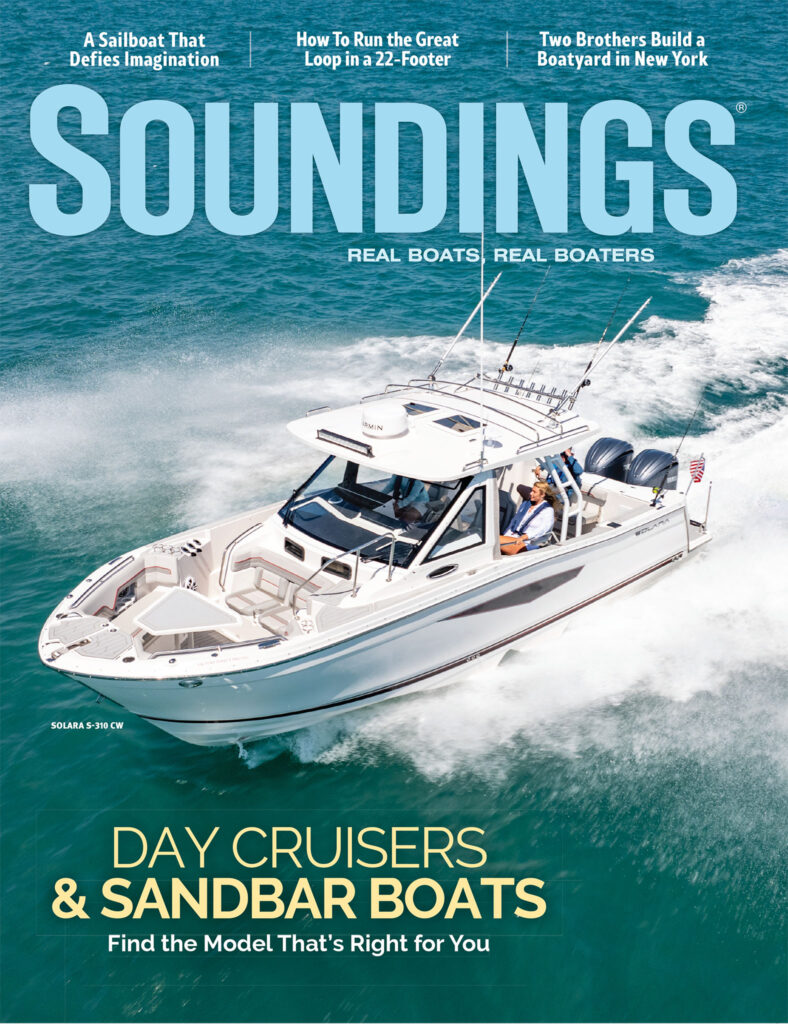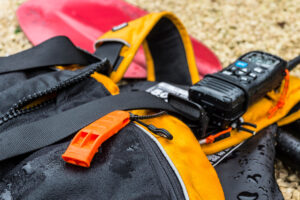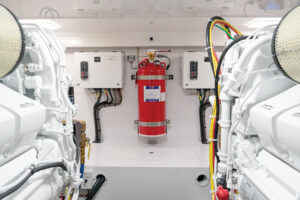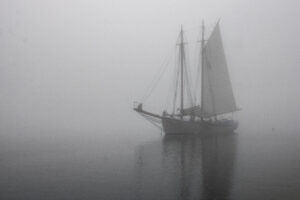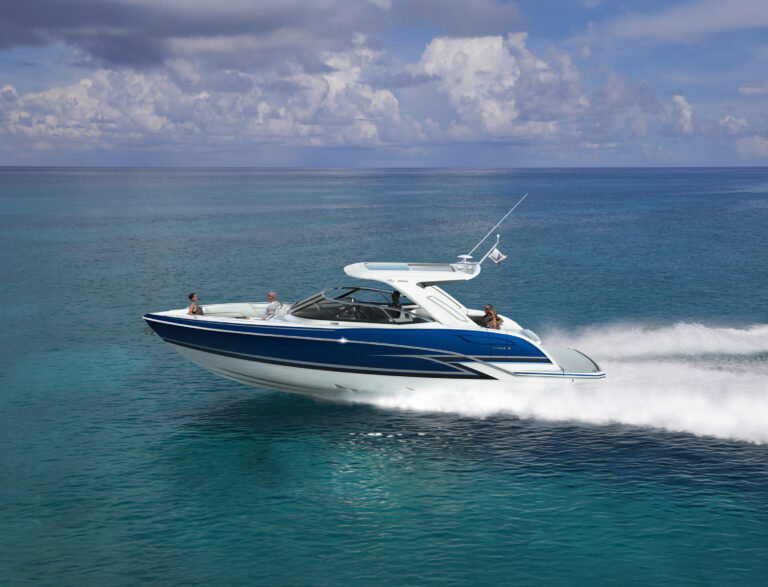“Hartge” has long been a boating name to reckon with in the land of pleasant living called the Chesapeake.
Through the decades, this working clan of watermen, farmers, boatbuilders, designers, restorers, painters, riggers, carpenters, engineers, mechanics, barnacle scrapers, sailors and powerboaters has looked upon Galesville, Md., as home port.

Earlier this year, however, a break within the nautically inclined family split up the legendary Hartge yachting operation in the small waterfront village on the Bay’s middle Western Shore. The dispute is a veritable can of worms, with family members taking sides. But this summer, happier sentimental memories of a simpler time among the large Hartge clan were revived when Jane Hartge, widow of the famed Ernest “Cap’n Dick” Hartge, observed her 90th birthday by visiting the old house in Galesville from her years-long residence in Eustis, Fla.
She reminisced with relatives on the open porch of the former home of Edmund Hartge, Cap’n Dick’s brother, where her daughter Alice resides. The middle house — the birthplace of Dick and most of his 10 brothers and sisters — is now the home of the Hartge Marine Museum, run by Laurence Hartge. The next waterfront house in this row of three is where Dick and Jane raised one son and three daughters in a cottage they built in 1941.
Suffice it to say there are numerous Hartges around and, to make things more complicated, many went by other names and nicknames. Totch Hartge, Jane’s only son, laughs when he recalls some names: Dick was really Ernest. Buddy was
really Vernon. Pete was Oscar. Billy is Henry. And Totch is Charles.
Interviewing Jane Hartge can be described in sailing terms. Her line of thoughts and recollections never stays on course, shooting off in other directions when a puff of memory strikes and she falls off into a past event. Or during a lift, when she trims her sentences and picks up speed, which leads to a new conversational course until an all-hands jibe makes a 180-degree turn to a new topic. Her children are well-acquainted with her quirky, conversational ways and collect stories about them.
At one point, looking out on a little harbor where she rented a small fleet of daysailers in the early 1940s, the memories came flowing out as we sat on a porch. I attempted to keep her on course with follow-up questions when she suddenly began shouting, “Slow down! Slow down!” I assumed, of course, she was talking to me, so I stopped. Then she pointed out to the water as a large motoryacht rumbled by, leaving a wake.
“I was always shouting at them to slow down for our sailors. Slow down! Slow down!” she explains, laughing. “Now where were we?”
I was totally lost and could not find my way back into her past. Luckily, Totch, her only son, was at hand and attempted to take over the reins. I had asked him to work up a short biography, and that put me on track.
Another lucky stroke came with the June opening of a first-rate exhibition at the Annapolis Maritime Museum (www.amaritime.org), “Legacy to the Bay: The Hartge Family and the Chesapeake 20.” It tracks the Hartge family from the arrival of Henry in Baltimore to the present, which now boasts two Hartge boatyards in Galesville — Hartge’s Yacht Harbor on the West River and Hartge’s Yacht Yard on Tenthouse Creek. Take your pick.
The Hartge clan took roots in America when Henry Hartge, a German cabinetmaker, immigrated to Baltimore in 1832 with his wife of many names: Louisa Charlotte Constantine Amalie Wilhelmenia Tschirpe. (She was called Emille.) He bought 467 acres in 1845 on the West River in Shady Side, where he farmed the land and worked the water. Additionally, he built pianos in Baltimore, though the Civil War ended that.
Jane Robinson, a Hartge by marriage, is the only survivor of three sisters born in Cincinnati to Charles “Skipper” Robinson and Agnes, known as “Tuppy.” A refrigeration engineer and manufacturer of ice plants, Skipper’s first love was cruising with his family in large character vessels, often with a hired captain, engineer and cook. Jane served as deckhand.
The Robinsons’ home base was in Fort Thomas, Ky., but they also had homes in Fort Lauderdale, Fla., and St. Mary’s, Md., where they got to know the Chesapeake. One of their many cruises brought them to Galesville in the late 1930s, where Jane and Dick first met. He had taken notice of this strong teenager’s boat-handling skills and invited her along for a daysail. By 1941 they were married; Jane was 21 and Dick a youthful 46.
Jane was a little misty-eyed as she strolled by the vintage photographs collected by Laurence Hartge for the museum exhibition. There was Cap’n Dick sitting on the floorboards of a Chesapeake 20 he designed and built, hand on the tiller and feet up on the deck. “A fine, gentle fellow,” she says, softly touching the black-and-white photograph. He built 49 Chesapeake 20s between 1935 and ’46, as well as log canoes, workboats, and large sailing and motoryachts. He died in 1979 at the age of 84.
Jane had a lively childhood, traveling and cruising the world. She wrote a book about her favorite adventure, a 1935 journey from Miami to Venezuela with a crew of eight aboard the family’s 86-foot Maine-built motorsailer. She was 16 years old, and her two sisters stayed home with their mother. The book was known as “that damn book” because it took up so much of her time and conversation before it was self-published in 1993. In “The Way They Were … with Cachalot to the Caribbees,” she rambles a bit in print, too, but that, after all, is the way of Jane Robinson Hartge.
Jack Sherwood is writer at large for Soundings.
This article originally appeared in the October 2009 issue.

